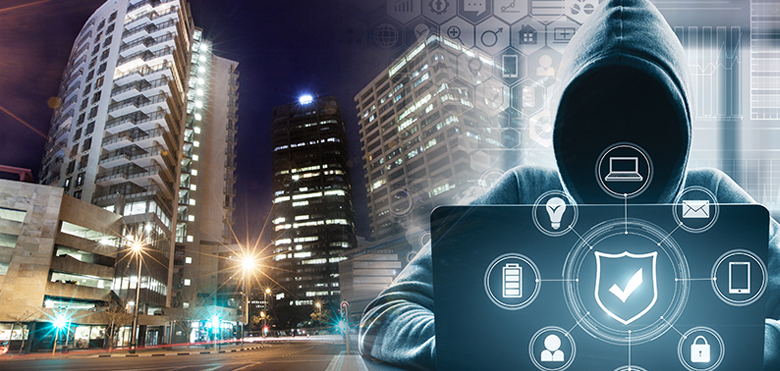Cybersecurity as the foundation for smart cities
Cybersecurity across all of a city’s departments, functions and systems has always been a challenge. As city infrastructure becomes more connected in themselves, and include millions of new connected devices and sensors, they never been more vulnerable.
Whether looking to cause disruption or extract a ransom, city infrastructure has become a popular target for cyberattacks. Transportation is an obvious target for those looking to affect the efficient running of a city, and both the Swedish Transport Agency and Colorado Department of Transportation can both attest to the cost. The former saw attacks disrupt and delay trains and booking websites, while the latter suffered outages in 2,000 computer systems as the result of a ransomware attack.
Further examples highlight how cybercriminals are looking to disrupt city infrastructure and services, from power supply to law enforcement. With the benefits of more connected cities, therefore, come heightened risks, not only to the efficient working of the city, but to the safety and security of its citizens.
Smart city cybersecurity risks
The vision of a smart city relies on a connected ecosystem of services, systems, businesses and residents, where each entity relies on the other to thrive. Driving improvements in efficiency and safety are key priorities for city officials. To achieve this, more cities are moving to become ‘smarter’ through the use of technology, the foundations for which are connected devices and data.
In short, the ‘attack surface’ of a smart city’s infrastructure is increasing almost exponentially, as more devices become connected to city systems – the so-called Internet of Things – and as more previously separate systems become integrated. The explosion in the number of connected devices has brought an even larger growth in attacks. Reports in 2019 claimed a 300% increase in cyberattacks on IoT devices over the year, a number which is likely to have escalated further since.
The reasons for the growth are clear. A cybercriminal is constantly probing for a vulnerable entry point to a network, with the aim of then moving through other connected systems to reach their desired destination. The most innocuous connected device, if insecure, could provide the point of access through which a cybercriminal reaches a far more critical system.
It’s essential, therefore, that in a desire to reap the benefits of a more connected smart city, authorities don’t ignore the critical importance of keeping systems secure. Indeed, a cybersecurity-first approach is needed.
Employing a converged security approach
Connected systems and data demand a connected security strategy. Unless all of a city’s stakeholders agree on the scale of the risks and, critically, the strategy to defend against them, cybersecurity will be fundamentally flawed. Indeed, with both electronic and physical security sitting alongside each other on corporate networks, and converged security approach has never been more important.
A converged security approach breaks down silos and empowers different business teams to work together towards a common goal. It is vital that physical security teams can rely on technologies that support their operational requirements and address associated risks, while at the same time, supporting IT security policies and ensuring that physical devices do not become the backdoor into the corporate network. With all stakeholders working together, it’s possible to create a secure cyber and physical environment.
Of course, the stakeholders in ensuring a converge approach to smart city security don’t only include employees of the city authorities. Every partner, vendor and supplier to the city’s infrastructure has a role to play – supply chains have been demonstrated to be one of the weakest links in organizational cybersecurity. Due diligence is critical, with city authorities needing to ensure that suppliers not only understand the risks around cybersecurity, but that they can demonstrate a mature cybersecurity approach within their own organizations.
Balancing convenience with risk
Cities will continue to be a target for cybercriminals. Antiquated technologies, the lack of a digital transformation strategy, and poor controls around connected devices all provide opportunities for cyberattack. Cities need to adjust their priorities to the realities of a networked urban landscape.
While the convenience of the smart city is enticing, it becomes about a careful balance between the benefits of smarter operations and the related risks.
A foundation for cyber security is to ensure that all IoT devices and network end points are as secure as possible. But the task is never completed, and it is important to understand that cybersecurity is all about hard work and diligence every day. Understand and detecting potential threats is key and working with an ecosystem of partners that work in close partnership to secure systems is critical.
It’s time to move to a proactive stance in protecting assets, before cities implement billions of hackable, un-patched and non-upgradable devices to the world’s digital grid.
Read more about how we can secure better cyber protection together.




